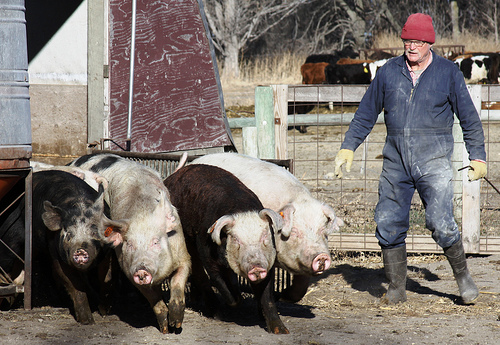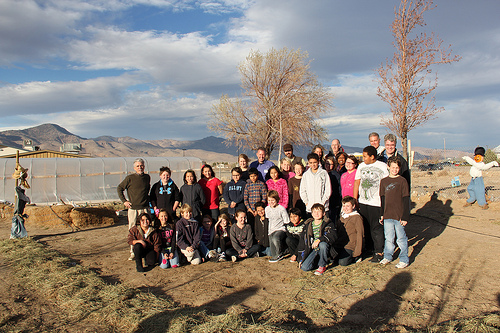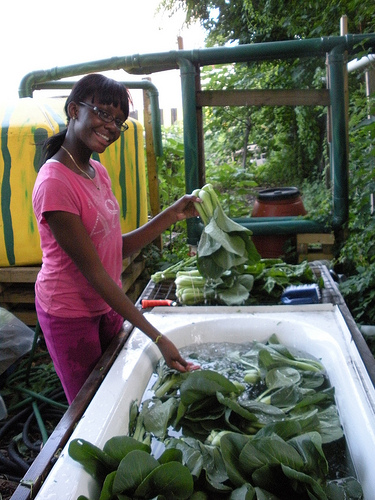Earlier this week, I had the privilege to join members and guests of the Farm Credit Council at their annual meeting in San Diego. It was a great opportunity to see some old friends and make new ones.
But it was also a time for me to continue to share the story of how critically important rural America is to our nation and why we can’t afford to allow rural areas to be left behind in the nation’s forward march to progress.
In meetings before large national farm and business groups, Agriculture Secretary Tom Vilsack often speaks about how agriculture continues to change and innovate. He notes how it has transformed from a two-dimensional approach that used to focus on production and livestock, to a multidimensional approach that now also emphasizes specialty crops and niche market opportunities, exports, developing fuel and energy crops through a bio-based economy, supporting local and regional food systems, and committing to conservation and outdoor recreational opportunities. Read more »
Demand for local and regional foods is strong and growing, as consumers across the country are looking for healthy food options grown and raised in their own communities. USDA has long supported this effort along with the procurement of regional foods by schools and helping them increase food literacy among the nation’s children.
These efforts will be the topic of the “Showcasing Local Foods” session at USDA’s 2013 Agriculture Outlook Forum, February 21-22, where Dr. Sonny Ramaswamy, director of USDA’s National Institute of Food and Agriculture (NIFA), will moderate a panel of speakers to discuss how local foods can lead to more nutritious diets. Lela Reichart with the Pennsylvania Department of Agriculture will discuss the Specialty Crop Block Grant Program, which focuses on nutrition knowledge and related topics. USDA Food and Nutrition Service’s Deborah Kane will discuss the Farm to School Program that isbringing more locally sourced fresh fruits and vegetables into school cafeterias. Tom Coon, from Michigan State University, will discuss Cooperative Extension’s role in educational programs related to regional and local food systems. Read more »
USDA programs have targeted assistance to beginning farmers and ranchers since the 1992 Agricultural Credit Improvement Act. Farms or ranches are considered “beginning” if the operators have managed them for 10 years or less. The Economic Research Service has looked at the trend in numbers of beginning farmers and ranchers in recent decades and examined some key characteristics that distinguish them from established farms using the Census of Agriculture and the Agricultural Resource Management Survey. Taken every five years, the Census provides the only source of uniform, comprehensive and impartial agricultural data for every county in the nation.
For more than two decades, the share of farms operated by beginning farmers has been in decline. Beginning farms and ranches accounted for 22 percent of the nation’s 2 million family farms and ranches in 2011 – down from about 38 percent in 1982. Consistent with this trend, the average age of principal farm operators in the United States has risen in that period, from 50 to 58. Read more »

Jim VanDerPol get his pigs ready for market on his Pastures A Plenty farm in Kerkhoven, Minn.
“We think that fresh air and sunshine are the best health guarantee.” That’s the quote you’ll see after opening a brochure from Pastures A Plenty Farm. Spend an hour with the VanDerPol family and you quickly understand that those words are much more than just a marketing slogan. It’s the family’s philosophy.
Pastures A Plenty’s pork products can be found in many co-ops, retail outlets, restaurants and local stores throughout Minnesota. The VanDerPols feed their hogs on grass and straw and use a wholistic veterinary approach featuring probiotics and spices instead of drugs. Read more »

Mr. Bob Gardner’s fifth grade class at Dayton Elementary, learns about science through a living /learning laboratory at the school greenhouse and garden. The Dayton Elementary School garden is one of several gardens funded with a USDA National Institute of Food and Agriculture grant to the Healthy Communities Coalition of Lyon and Storey Counties in northwestern Nevada.
“Can a School Garden Supplement a Community’s Food Supply in a Sustainable Way?” That was the question asked by Bob Gardner’s fifth grade class at Dayton, Nevada, Elementary School on Tuesday as students presented their science projects to classmates and adult guests. Read more »

Dianna Grant of East New York Farms! Youth Internship program washes bok choy at the United Community Centers Youth Farm in Brooklyn, N.Y. East New York Farms! Is a recipient of the USDA Community Food Projects grant. Photo courtesy East New York Farms!
If your picture of New York City is skyscrapers and neon, consider expanding that image to include vegetable crops – a lot of vegetable crops – growing everywhere from ground level to rooftops. Read more »



